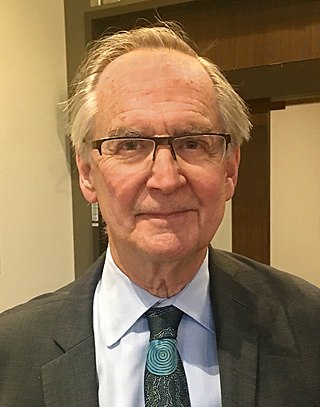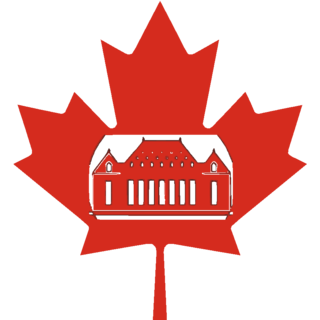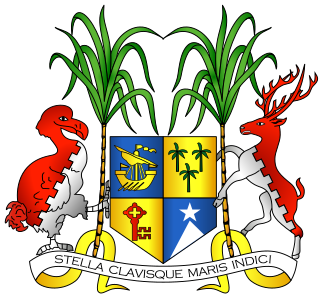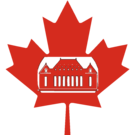
The Supreme Court of Canada is the highest court in the judicial system of Canada. It comprises nine justices, whose decisions are the ultimate application of Canadian law, and grants permission to between 40 and 75 litigants each year to appeal decisions rendered by provincial, territorial and federal appellate courts. The Supreme Court is bijural, hearing cases from two major legal traditions and bilingual, hearing cases in both official languages of Canada.
The University of Toronto Faculty of Law is the law school of the University of Toronto. The Faculty's admissions process is the most selective of law schools in Canada and is one of the most selective in North America. The Faculty has consistently been ranked as the top law school for Common Law in Canada by Maclean's since it began to publish law school rankings. The Faculty offers the JD, LLM, SJD, MSL, and GPLLM degrees in law.

The chief justice of Canada is the presiding judge of the nine-member Supreme Court of Canada, the highest judicial body in Canada. As such, the chief justice is the highest-ranking judge of the Canadian court system. The Supreme Court Act makes the chief justice, a Crown in Council appointment, meaning the Crown acting on the advice of the prime minister and minister of justice. The chief justice serves until they resign, turn 75 years old, die, or are removed from office for cause. By tradition, a new chief justice is chosen from among the court's incumbent puisne justices.
The Federal Court of Canada, which succeeded the Exchequer Court of Canada in 1971, was a national court of Canada that had limited jurisdiction to hear certain types of disputes arising under the federal government's legislative jurisdiction. Originally composed of two divisions, the Appellate Division and the Trial Division, in 2003 the Court was split into two separate Courts, the Federal Court and the Federal Court of Appeal. The jurisdiction and powers of the two courts remained largely unchanged from the predecessor divisions.
The Court of Appeal for Ontario is the appellate court for the province of Ontario, Canada. The seat of the court is Osgoode Hall in downtown Toronto, also the seat of the Law Society of Ontario and the Divisional Court of the Ontario Superior Court of Justice.
The court system of Canada forms the country's judiciary, formally known as "The King on the Bench", which interprets the law and is made up of many courts differing in levels of legal superiority and separated by jurisdiction. Some of the courts are federal in nature, while others are provincial or territorial.
Ronald Martland, was a Canadian lawyer and Puisne Justice of the Supreme Court of Canada. He was the second Albertan appointed to the Supreme Court of Canada, taking the place of Justice Nolan, who died after only a short time on the Court.

William Ian Corneil Binnie is a former puisne justice of the Supreme Court of Canada, serving from January 8, 1998 to October 27, 2011. Of the justices appointed to the Supreme Court in recent years, he is one of the few appointed directly from private practice. On his retirement from the Court, he was described by The Globe and Mail as "arguably the country's premier judge", by La Presse as "probably the most influential judge in Canada of the last decade" and by the Toronto Star as “one of the strongest hands on the court.”

The Supreme Court of Canada was founded in 1875 and has served as the final court of appeal in Canada since 1949. Its history may be divided into three general eras. From its inception in 1875 until 1949, the Court served as an intermediate appellate court subject to appeal to the Judicial Committee of the Privy Council in Britain. Following 1949, the Court gained importance and legitimacy as the court of last resort in Canada, establishing a greater role for the Canadian judiciary. In 1982, the introduction of the Canadian Charter of Rights and Freedoms significantly changed the role of the Court in Canadian society, by providing the Court with greater powers of oversight over Parliament and through formal recognition of civil rights including aboriginal rights and equality rights.
The Supreme Court of the Northwest Territories is the name of two different superior courts for the Canadian territory of the Northwest Territories, which have existed at different times.
Judicial appointmentsin Canada are made by the federal government or provincial government. Superior and federal court judges are appointed by federal government, while inferior courts are appointed by the provincial government.
The chief justice of the Democratic Socialist Republic of Sri Lanka is the head of the judiciary of Sri Lanka and the Supreme Court of Sri Lanka. Established in 1801, the chief justice is one of ten Supreme Court justices; the other nine are the puisne justices of the Supreme Court of Sri Lanka. The post was created in 1801. The chief justice is nominated by the Constitutional Council, and appointed by the president. The first chief justice was Codrington Edmund Carrington. The 47th and current chief justice is Jayantha Jayasuriya.
Michael Moldaver is a former Canadian judge. He was a puisne justice on the Supreme Court of Canada from his 2011 appointment by former Prime Minister Stephen Harper until his retirement in 2022. Before his elevation to the nation's top court, he served as a judge at the Ontario Superior Court of Justice and the Court of Appeal for Ontario for over 20 years. A former criminal lawyer, Moldaver is considered an expert in both Canadian criminal law and the Canadian Charter of Rights and Freedoms.

The Supreme Court of Mauritius is the highest court of Mauritius and the final court of appeal in the Mauritian judicial system. It was established in its current form in 1850, replacing the Cour d'Appel established in 1808 during the French administration and has a permanent seat in Port Louis. There is a right of appeal from the Supreme Court of Mauritius directly to the Judicial Committee of the Privy Council in London. The Judicial Committee of the Privy Council (JCPC) is the court of final appeal for Mauritius.

Euro-Excellence Inc v Kraft Canada Inc, 2007 SCC 37, [2007] 3 S.C.R. 20, is a Supreme Court of Canada judgment on Canadian copyright law, specifically on the issue of indirect infringement and its application to parallel importation. Kraft Canada sued Euro-Excellence Inc. for copyright infringement due to their importation of Côte d’Or and Toblerone chocolate bars from Europe into Canada. A majority of the court found that the copyright claim could not succeed, although they split on whether the claim failed due to the rights of an exclusive licensee or due to the scope of copyright law.

Reference ReSupreme Court Act, ss. 5 and 6, 2014 SCC 21 is a decision of the Supreme Court of Canada concerning the eligibility of members of the Quebec courts and the Quebec Bar to be appointed to the three seats on the Supreme Court reserved for Quebec. The case also considers the constitutional status of the Supreme Court, holding that the Court has been constitutionally entrenched by the Constitution Act, 1982, and that the composition of the Court, including eligibility for appointment, can only be amended by unanimous consent of the House of Commons, Senate and all provincial legislative assemblies.

In Reference re Greenhouse Gas Pollution Pricing Act 2021 SCC 11, the Supreme Court of Canada ruled on 25 March 2021 that the federal carbon pricing law is constitutional.






